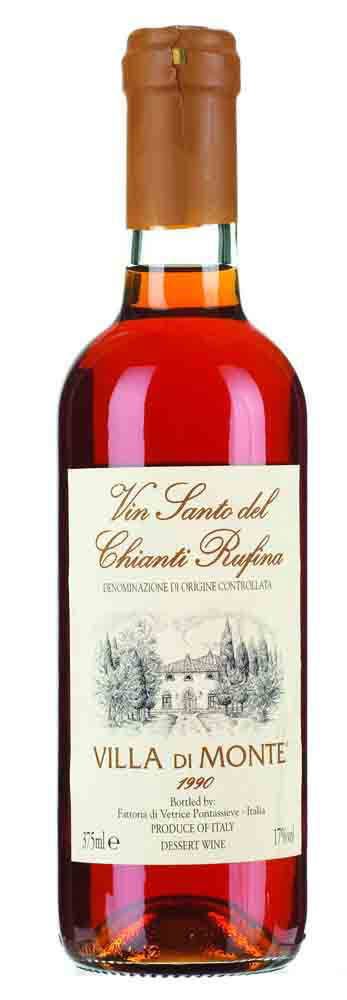Get Premium access to all the latest content online
Subscribe and view full print editions online... Subscribe
You don’t need a special occasion to enjoy a sweet wine; with myriad styles out there, says Adam Lechmere, it deserves a more regular outing
W henever he ordered a white wine in a restaurant there was one thing my father always used to ask: ‘Is it dry?’ The average wine drinker – with too many experiences of the flabby, sugary concoctions that stymied the German wine industry’s reputation – used to have a horror of sweet wines, and their reputation has been diffi cult to shake. Which is a shame, as within the sweet spectrum there are wines that go with a panoply of different foods, from oysters to pungent blue cheese, and boast some of the most sublime flavours that you’ll ever taste.
Almost every wine region, from Bordeaux to South Australia, has developed methods of achieving intense sweetness while retaining the acidity that is essential for balance and freshness. In Bordeaux’s Sauternes subregion a tiny spoor called botrytis – noble rot – blooms on the grapes as mists roll in from the sea, sucking the moisture from the fruit and leaving a residue of concentrated sweet juice in greyish, rotting berries. Botrytis is also responsible for the greatest sweet wine of all, the extraordinary Tokaji of Hungary. In Germany, Canada and parts of the USA – and in China, now – ice wine, or eiswein, is produced by harvesting at dead of night in deep winter, at temperatures of minus eight degrees Celsius or lower, the grapes frozen and bullet hard, each containing a drop of intensely sweet juice. One of the most common methods is late harvest – simply leaving the grapes on the vine to shrivel, concentrating sugars. For Vin Santo in Tuscany they go further, laying the grapes out to dry, lending the wine raisiny fl avours. In Roussillon, they create vin doux naturel by adding spirit to the must, killing the yeast while it’s still busy converting sugar to alcohol, so leaving the sugars intact. Whatever method is used, it’s time-consuming and expensive: in Sauternes they pick literally grape by grape; ice wine pickers, working in temperatures as low as minus 40, are muffled like polar explorers.
But with what results! The fi nest sweet wines strike a balance between sugar and acidity – and, in Sauternes, a hint of tempering salinity. The spectrum of fl avours you’ll
When it comes to pairing sweet wines with food, don’t be hidebound. There are classic matches: Sauternes and Tokaji go wonderfully with powerful blue cheeses such as Roquefort, or the smooth richness of foie gras. But lighter styles like vin doux naturel work with hot, spicy cuisine such as Sichuan – the floral sweetness of the wine can play with the heat of the chilli in unexpected ways. Then there are the puds. Imagine a slice of tarte tatin, the apples caramelised and running with butter, followed by a draught of late-harvest riesling or semillon to clear and refresh your palate.
Lastly, drink them on their own, as aperitifs, after dinner, or as a nightcap, but above all, don’t wait for that elusive special occasion. The sugars in sweet wines preserve them – an opened bottle will keep in the fridge for more than a week. As one Sauternes winemaker said when I asked her what advice she had for those who were unsure how and when to drink her wines: ‘Just open the bottle.’
Made from grenache, this vin doux marries the hot, herby garrigue of the south of France with port-like favours: chocolate, plums and sweet dark berries. Try with blue cheese and quince paste.
Available at:Lea and Sandeman

This Austrian late harvest wine shows hints of hay and the palate has tingling acidity with lemon, clementine, honeysuckle, jasmine, quince, cinnamon and cloves. Drink on its own or with apple crumble.
Available at:Roberson

Wonderful raisined sweetness with a hint of salinity, sherry-like with sweet plums and dried fruit – a mouthful of Christmas cake from this Tuscan straw wine. The perfect match? Devils on horseback.
Available at:Marks and Spencer

An utterly delicious mouthful of fi gs, raisins, prunes and molasses, unctuous and dense but still surprisingly light. This sweet sherry is delicious with chocolaty desserts or poured over vanilla ice cream.
Available at:The Whisky Exchange

The fi rst aromas aren’t sweet at all but the palate has intense honey, orange, cloves and allspice with bracing acidity. Zingy enough for chocolate torte, and anything with chocolate and orange. Also lovely on its own.
Available at:Majestic

Subscribe and view full print editions online... Subscribe